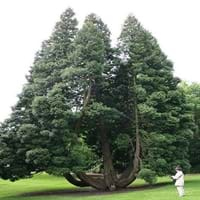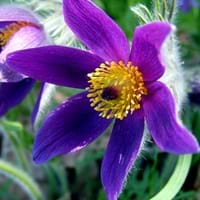Life Span
Perennial
Annual and Perennial
Type
Needled or Scaled Evergreen
Perennial
Origin
Northwestern United States, Canada
Europe, Eastern Europe, Southern Europe, Western Europe, United Kingdom
Types
Not available
Pulsatilla vulgaris, Pulsatilla vulgaris rubra, Pulsatilla vulgaris alba
Number of Varieties
Not Available
Habitat
Lowland, Moist Soils, Swamps
meadows, Slopes, Wooded slopes
USDA Hardiness Zone
5-7
5-7
Sunset Zone
A3, 1a, 1b, 2a, 2b, 3a, 3b, 4, 5, 6, 7, 8, 9, 14, 15, 16, 17, 18, 19, 20, 21, 22, 23, 24
2b, 3a, 3b, 4, 5, 6, 15, 16, 17
Habit
Pyramidal
Clump-Forming
Flower Color
Light Yellow
Indigo, Purple, Violet
Flower Color Modifier
Bicolor
Not Available
Fruit Color
Brown, Sienna
Greyish Brown
Leaf Color in Spring
Dark Green
Light Green
Leaf Color in Summer
Dark Green
Light Green
Leaf Color in Fall
Dark Green
Light Green
Leaf Color in Winter
Dark Green, Bronze
Light Green
Leaf Shape
Scale-like imbricate
Rosette
Plant Season
Spring, Summer, Fall, Winter
Spring
Sunlight
Full Sun, Partial Sun
Full Sun
Type of Soil
Loam
Loam, Sand
The pH of Soil
Acidic, Neutral
Neutral, Alkaline
Soil Drainage
Well drained
Well drained
Bloom Time
Spring
Early Spring, Spring
Tolerances
Pollution, Soil Compaction
Drought
Where to Plant?
Ground
Ground, Pot
How to Plant?
Cuttings, Hardwood Cuttings, Rooted stem cutting, Seedlings
root cutting, Seedlings
Plant Maintenance
Medium
Medium
Watering Requirements
Average Water Needs, Needs a lot of moisture in the growing season, when new, water every week
Medium
In Summer
Lots of watering
Lots of watering
In Spring
Moderate
Moderate
In Winter
Average Water
Average Water
Soil pH
Acidic, Neutral, Alkaline
Neutral, Alkaline
Soil Type
Clay, Loam, Sand
Loam, Sand
Soil Drainage Capacity
Well drained
Well drained
Sun Exposure
Full Sun
Full Sun
Pruning
Remove damaged leaves, Remove dead branches, Remove dead leaves
Remove damaged leaves, Remove dead branches, Remove dead leaves
Fertilizers
All-Purpose Liquid Fertilizer
All-Purpose Liquid Fertilizer
Pests and Diseases
Armillaria root rot, Bark beetles
Cutworms, Larvae of Agave Weevil
Plant Tolerance
Drought
Drought
Flowers
Insignificant
Showy
Flower Petal Number
Not Available
Single
Fragrant Bark/Stem
Yes
No
Foliage Texture
Fine
Fine
Foliage Sheen
Glossy
Matte
Attracts
Not Available
Not Available
Allergy
Asthma, contact allergic dermatitis, Urticaria
convulsions, Diarrhea, Not Available, Stomach pain, Vomiting
Aesthetic Uses
Not Used For Aesthetic Purpose
along a porch, deck or patio, Showy Purposes
Beauty Benefits
Not Available
Not Available
Environmental Uses
Air purification
Air purification
Medicinal Uses
Bronchitis, Cold, Cough, Fever, Sore throat
Not Available
Part of Plant Used
Branch, Inner Bark, Leaves, Wood
Not Available
Other Uses
Dugout canoes, Making deodorants, Medicinal oil, Paper pulp, Pulp can be used to make rope place mats and other goods, Used as an insecticide, Used to make baskets
Showy Purposes
Used As Indoor Plant
No
No
Used As Outdoor Plant
Yes
Yes
Garden Design
Feature Plant, Hedges, Screening / Wind Break
Alpine, Mixed Border, Rock Garden / Wall
Botanical Name
THUJA plicata
PULSATILLA vulgaris
Common Name
Giant Arborvitae, Green Giant Arborvitae, Western Arborvitae, Western Red Cedar
Pasque Flower, wind flower, prairie crocus, Easter Flower, meadow anemone
In Hindi
Pacific redcedar
Pasque Flower
In German
Riesen-Lebensbaum
Kuhschellen
In French
Thuja plicata
Pasque Flower
In Spanish
Thuja plicata
Pasque Flower
In Greek
Thuja plicata
Pasque Flower
In Portuguese
Thuja plicata
Pasque Flower
In Polish
Żywotnik olbrzymi
Sasanka
In Latin
Thuja plicata
Pasque Flower
Phylum
Pinophyta
Vascular plant
Class
Pinopsida
Magnoliopsida
Order
Pinales
Ranunculales
Family
Cupressaceae
Ranunculaceae
Clade
Not Available
Angiosperms, Eudicots
Subfamily
Not Available
Not Available
Number of Species
Not Available
Season and Care of Western Red Cedar and Pasque Flower
Season and care of Western Red Cedar and Pasque Flower is important to know. While considering everything about Western Red Cedar and Pasque Flower Care, growing season is an essential factor. Western Red Cedar season is Spring, Summer, Fall and Winter and Pasque Flower season is Spring, Summer, Fall and Winter. The type of soil for Western Red Cedar is Loam and for Pasque Flower is Loam, Sand while the PH of soil for Western Red Cedar is Acidic, Neutral and for Pasque Flower is Neutral, Alkaline.
Western Red Cedar and Pasque Flower Physical Information
Western Red Cedar and Pasque Flower physical information is very important for comparison. Western Red Cedar height is 1,520.00 cm and width 760.00 cm whereas Pasque Flower height is 12.70 cm and width 15.20 cm. The color specification of Western Red Cedar and Pasque Flower are as follows:
Western Red Cedar flower color: Light Yellow
Western Red Cedar leaf color: Dark Green
Pasque Flower flower color: Indigo, Purple and Violet
- Pasque Flower leaf color: Light Green
Care of Western Red Cedar and Pasque Flower
Care of Western Red Cedar and Pasque Flower include pruning, fertilizers, watering etc. Western Red Cedar pruning is done Remove damaged leaves, Remove dead branches and Remove dead leaves and Pasque Flower pruning is done Remove damaged leaves, Remove dead branches and Remove dead leaves. In summer Western Red Cedar needs Lots of watering and in winter, it needs Average Water. Whereas, in summer Pasque Flower needs Lots of watering and in winter, it needs Average Water.





